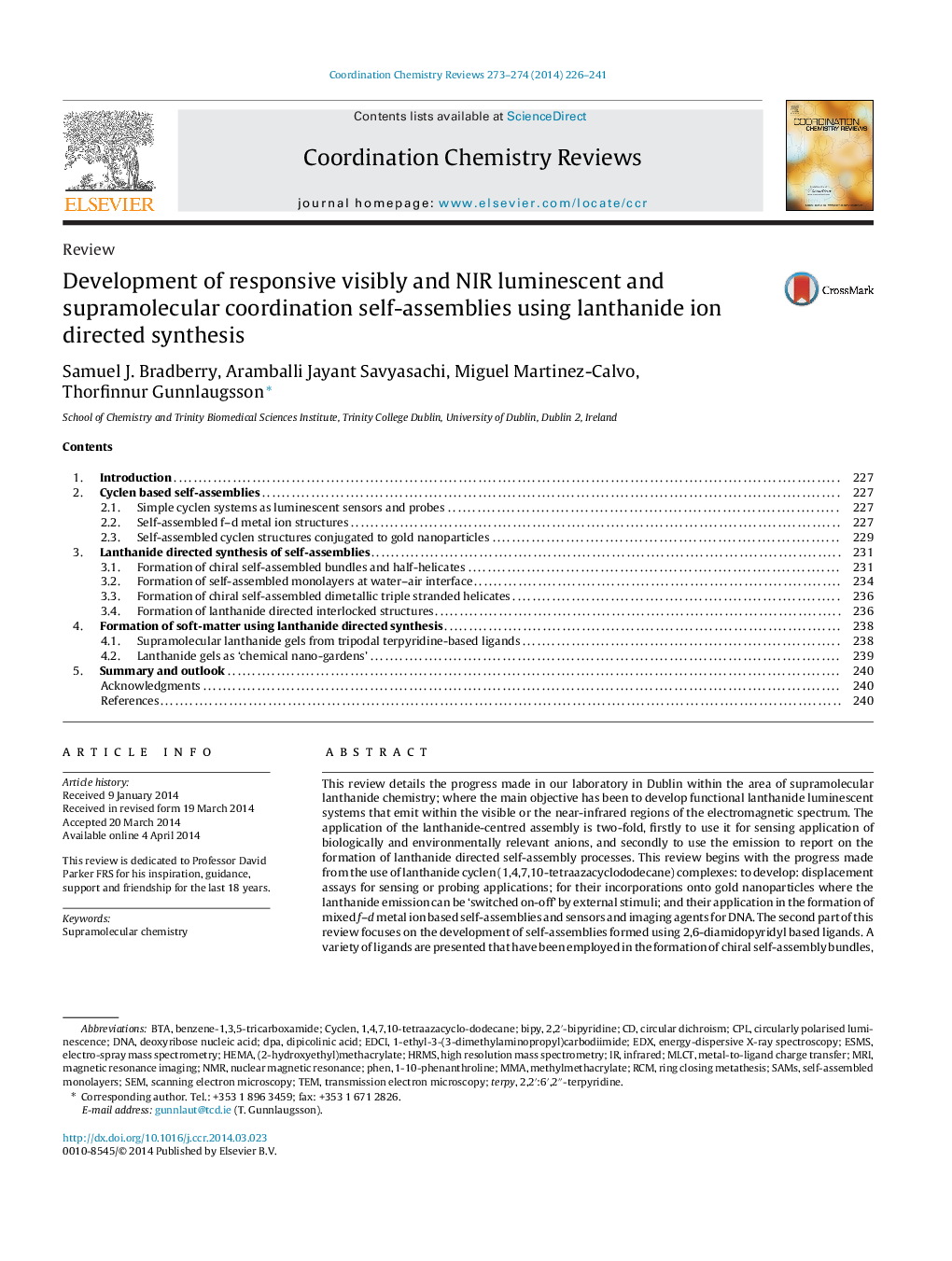| Article ID | Journal | Published Year | Pages | File Type |
|---|---|---|---|---|
| 1300963 | Coordination Chemistry Reviews | 2014 | 16 Pages |
•We review the effort at Trinity College Dublin to develop lanthanide based self-assembly structures.•A substantial breadth of research is presented collating representative examples from the group published to date.•Cyclen-derived systems are reviewed as probes, as discrete complexes and AuNP conjugated assemblies, for various analytes.•Self-assembly structures are reviewed covering mono- and di- metallic bundles, helicates and leading to catenated systems.•Progress towards soft matter applications of lanthanide-based self-assembled gels are discussed.
This review details the progress made in our laboratory in Dublin within the area of supramolecular lanthanide chemistry; where the main objective has been to develop functional lanthanide luminescent systems that emit within the visible or the near-infrared regions of the electromagnetic spectrum. The application of the lanthanide-centred assembly is two-fold, firstly to use it for sensing application of biologically and environmentally relevant anions, and secondly to use the emission to report on the formation of lanthanide directed self-assembly processes. This review begins with the progress made from the use of lanthanide cyclen (1,4,7,10-tetraazacyclododecane) complexes: to develop displacement assays for sensing or probing applications; for their incorporations onto gold nanoparticles where the lanthanide emission can be ‘switched on-off’ by external stimuli; and their application in the formation of mixed f–d metal ion based self-assemblies and sensors and imaging agents for DNA. The second part of this review focuses on the development of self-assemblies formed using 2,6-diamidopyridyl based ligands. A variety of ligands are presented that have been employed in the formation of chiral self-assembly bundles, dimetallic triple stranded helicates and Langmuir–Blodgett films that give rise to circularly polarised luminescence. The formation of such organised self-assembly monolayers of water–air interface brings us to the last topic of this review, along with the formation of novel soft-material such as gels, where the lanthanide emission is employed to report on the formation of three dimensional supramolecular structures, and their application as ‘nano-gardens’ in growing ionic structures with novel morphologies.
Graphical abstractFigure optionsDownload full-size imageDownload high-quality image (156 K)Download as PowerPoint slide
